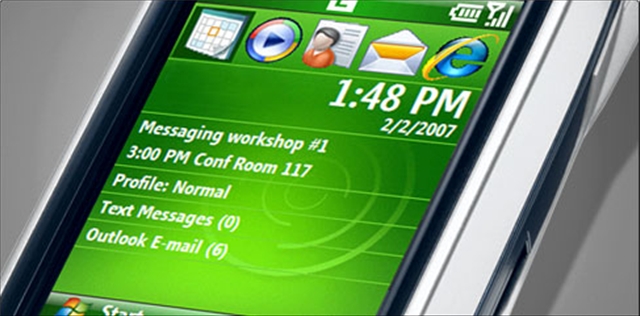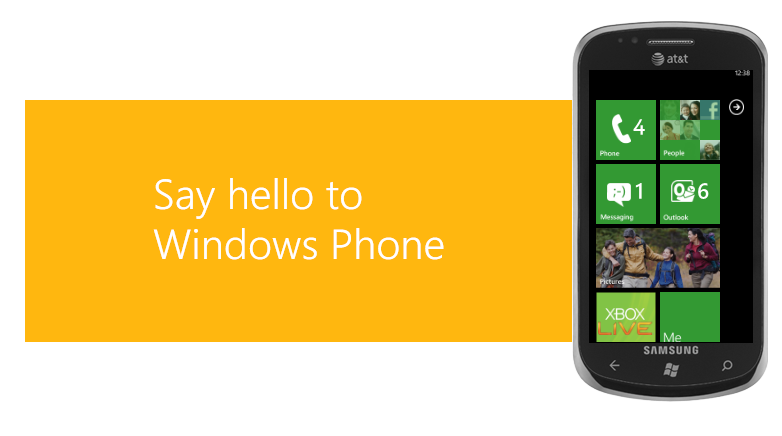Let's set the scene. With the news that Microsoft are planning to return the default starting view of Windows 8.1 as the 'Windows 7 style Desktop', there are rather a lot of anguished stories on why Microsoft should stay the course on the 'Metro' interface, editorials on why this is exactly what IT departments and Enterprise customers actually want, and rather a lot of 'I told you so' posts from well-read technology sites.
This isn't the first time that Microsoft have embarked on a significant user interface overhaul, and neither is it the first time that this overhaul has created a notable volume of discussion and opinion online. Just a few years ago, with Windows Mobile putting in a decent showing at the market share coal face of US smartphone usage, the team from Redmond decided that the day of Windows Mobile was drawing to a close.
Rather than move to Windows Mobile 7, the new mobile operating system would be called Windows Phone 7, and it would use the new design language that was already in use on Windows Media Centre and the Zune HD media players. An intriguing crash of square tiles, truncated typography, and modern cutting-edge design, the look of the UI was a long way from the information dense home screen and Windows XP styled icons and menus of Windows Mobile.
Users would be going from an almost printed agenda-like view of their day, listing appointments, events, emails, and calls on what we would now call a notifications screen. Information would be displayed on tiles, alerting the user that something was waiting for them and they could touch to find out. It was a rather radical change from Microsoft.

And there was another sting in the tail. Windows Phone would not be code compatible with Windows Mobile. Developers would have to start again, reworking applications for the new look and improved API's of the new platform.
All of which sounds rather like the situation that Windows 8 finds itself. But unlike Windows Phone, Windows 8 has maintained the ability to run legacy applications, and left the legacy UI in the system. Neither has Windows 8 been a (total) failure, but there is still a sense that Microsoft pushed too much change too quickly, and now they are rolling back to the 'last safe commercial point'.
Even after its slow start, a rollback was never an option with Windows Phone 7.
It's easy to look back at Windows Mobile and argue that Microsoft made the wrong decision in doing a 'Day Zero' reset of their mobile plans with Windows Phone. The Windows Mobile platform had a solid range of applications, it was used by a number of manufacturers, and the ActiveSync technology integrated especially well with Microsoft's Enterprise Server technology. Its market share in the US peaked at 42% in 2007, and it had solid support from the main networks.
Windows Phone would struggle to claim any of those as wins. Network support is limited at best, market share is still in the sub 5% niche territory in the US, and 95% of the platform is built by a single division of Nokia (a division that will very soon, short of a rather spectacular news report, be owned by Microsoft).
But our rose-tinted glasses need to remember one thing. The success of Windows Mobile was before 'The Great Divide' of the smartphone world. The release of the iPhone and the rise of Android, independent of any choices that Microsoft made with their mobile strategy.

Microsoft's plan then, unlike now, was to start again with a blank sheet of paper. They were behind the curve compared to iOS and Android, but a new Operating System and associated platform might hand them the chance to compete. While Windows Phone has not reached the heights of the two newer mobile platforms, it did something else - it kept Microsoft in the mobile game.
You have to look at the operating systems that were around for the first flowering of the smartphone concept and ask where they are today. The rise and fall of Symbian OS has been very well documented on our sister site, All About Symbian. Like many older operating systems, a hardcore of users remain in place, modding, tweaking, and keeping the hardware and software alive. Ultimately Symbian became too old, too spaghettified (in code, at least), and unable to be developed for the modern needs of a smartphone. Tool-chains, developer code, and being old enough to no longer be fashionable, spelled the end of Symbian.
Trace Palm OS back to its early days and you find a compatriot of Symbian (née EPOC and SIBO). Just as Symbian was having its final summer with the Nokia N95, Palm OS had one last push before it was sold to Access, and that was that. The team floated a new device with a new card based interface in WebOS, but while there was a love in the room for the team, WebOS led a short and troubled life.
BlackBerry's OS from those days has been forced to keep up with the modern trends, but you'd be hard pushed to recommend BB7 to anyone except someone looking for strong legacy support for an older IT structure. Just like Palm, the Canadians have taken a swing at a new OS (BB10). One year after launch, it's registering a 0.0% market share in the US.
Windows Mobile was a strong OS when the above OS's were also strong. Looking at the capability of Windows Mobile alongside the other options on sale in those years, and looking at the fate of the operating companies that tried to stay the course, there is nothing you can extrapolate that would suggest staying with Windows Mobile (and evolving it) would have been the correct choice in 2009.
If Microsoft had heeded the calls to stay with the evolution of Windows Mobile, I suspect that they would have followed that generation of mobile Operating Systems into obscurity. Android and iOS would have continued to grow at the expense of the older platforms, including Windows Mobile, and I cannot honestly imagine the white-ish knight of Nokia going with the Windows Mobile platform - they would have been left with the Hobson's choice of remaining with the immature Meego platform or ceding control of their user base and some of the core app experience to Google and Android. [With no Windows Phone, I suspect Nokia would have finally gone with Android - Ed.]
Not only would Windows Mobile have spluttered out after perhaps another two years of life. Microsoft would have been left without a 'modern' mobile operating system and left with their own interesting situation of either launching a new OS from a 0.0% launchpad, or looking at their own fork of something like Android.

Windows Phone 7 and Windows Phone 8 have had a rocky road, and there have been some decisions that could have been made differently in their evolution, but the decision to disrupt Windows Mobile with Windows Phone has allowed them to transition into the second decade of the 21st century and still be in the smartphone game, albeit in third place.
While I can see the rationale behind the decision to 'demote' the Metro interface in Windows 8.1 (assuming that actually happens, it's still based on online discussion and unnamed sources), Windows 8 is an evolution of Windows 7, and this is more a presentational issue than a requirement to clear out the code base and reset the platform for the next ten years. The move away from Windows Mobile, violent as it was, ensured Microsoft was going to be a contender in the next wave of devices.
Being the 'third ecosystem' might not be the result that Microsoft aimed for, but it is a positive result, and given the turmoil the smartphone market has been through in the last few years it's a good return for Redmond. Just as the Window 8/Windows 8.1 situation shows, Microsoft can react to circumstances. If they hadn't, they wouldn't have a smartphone platform in 2014.
